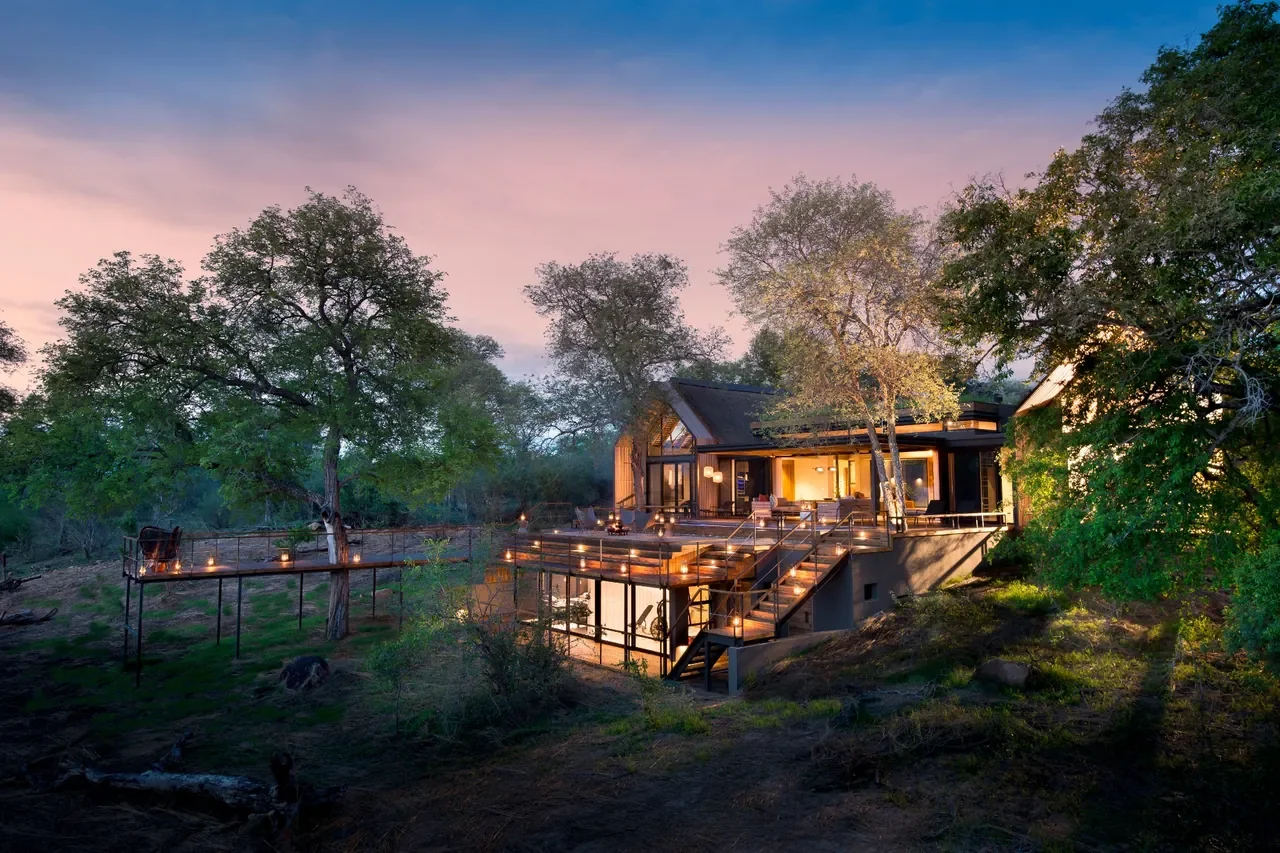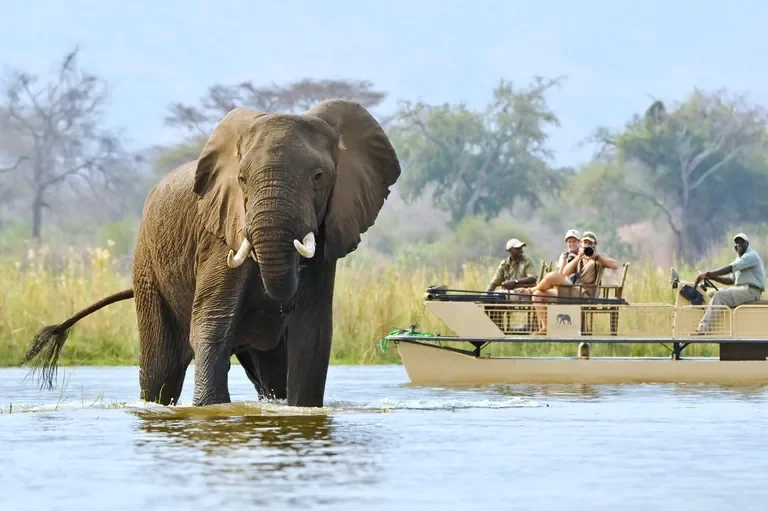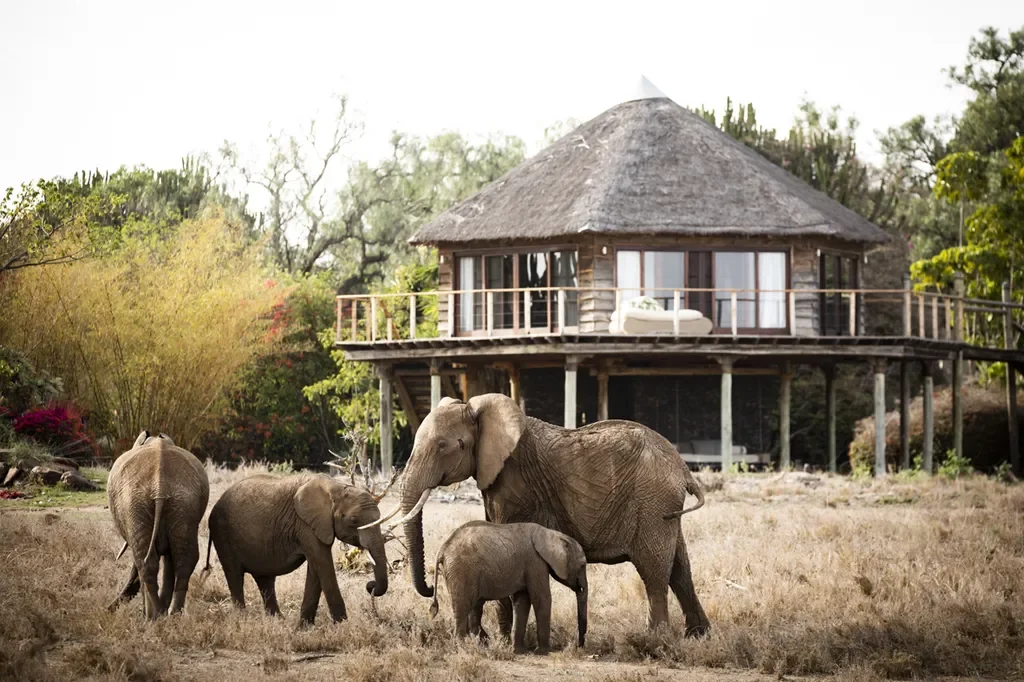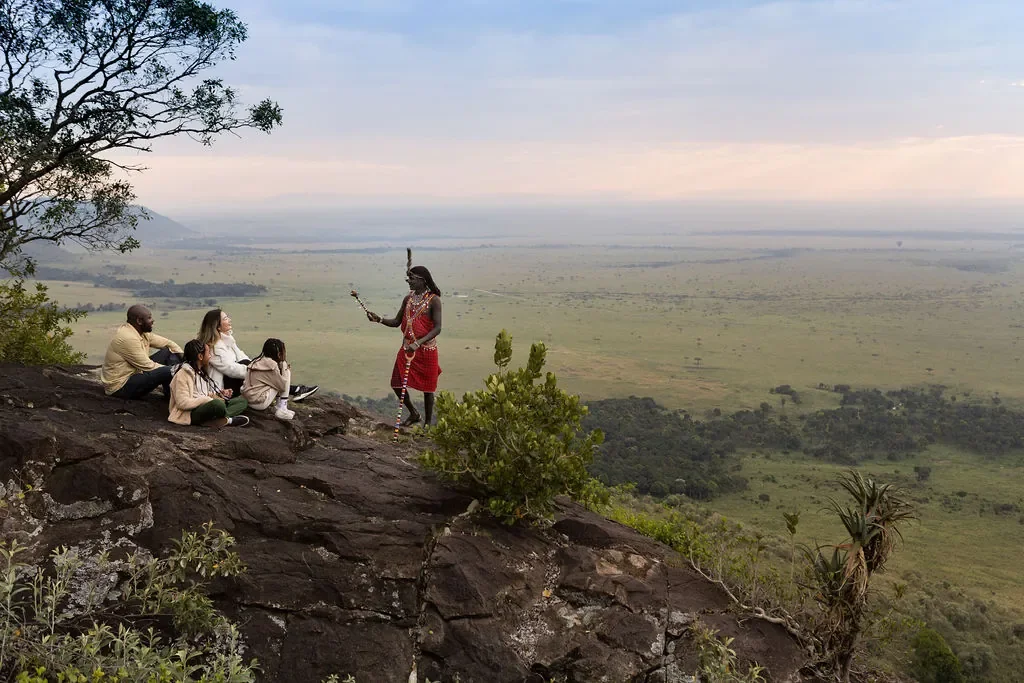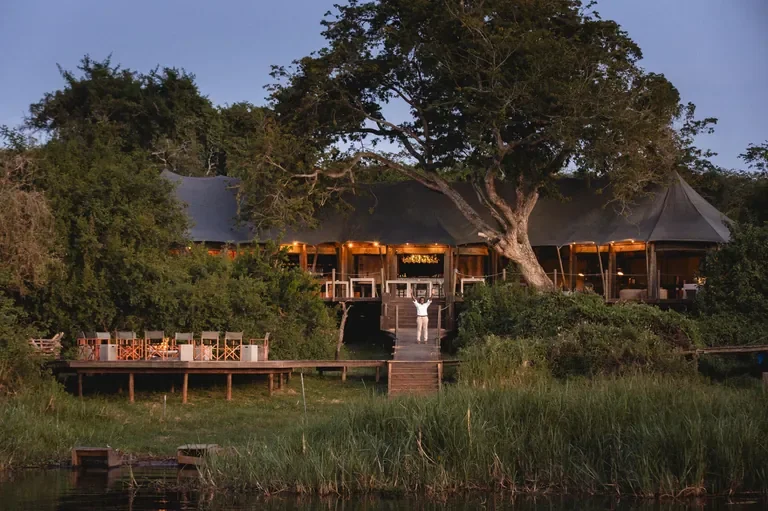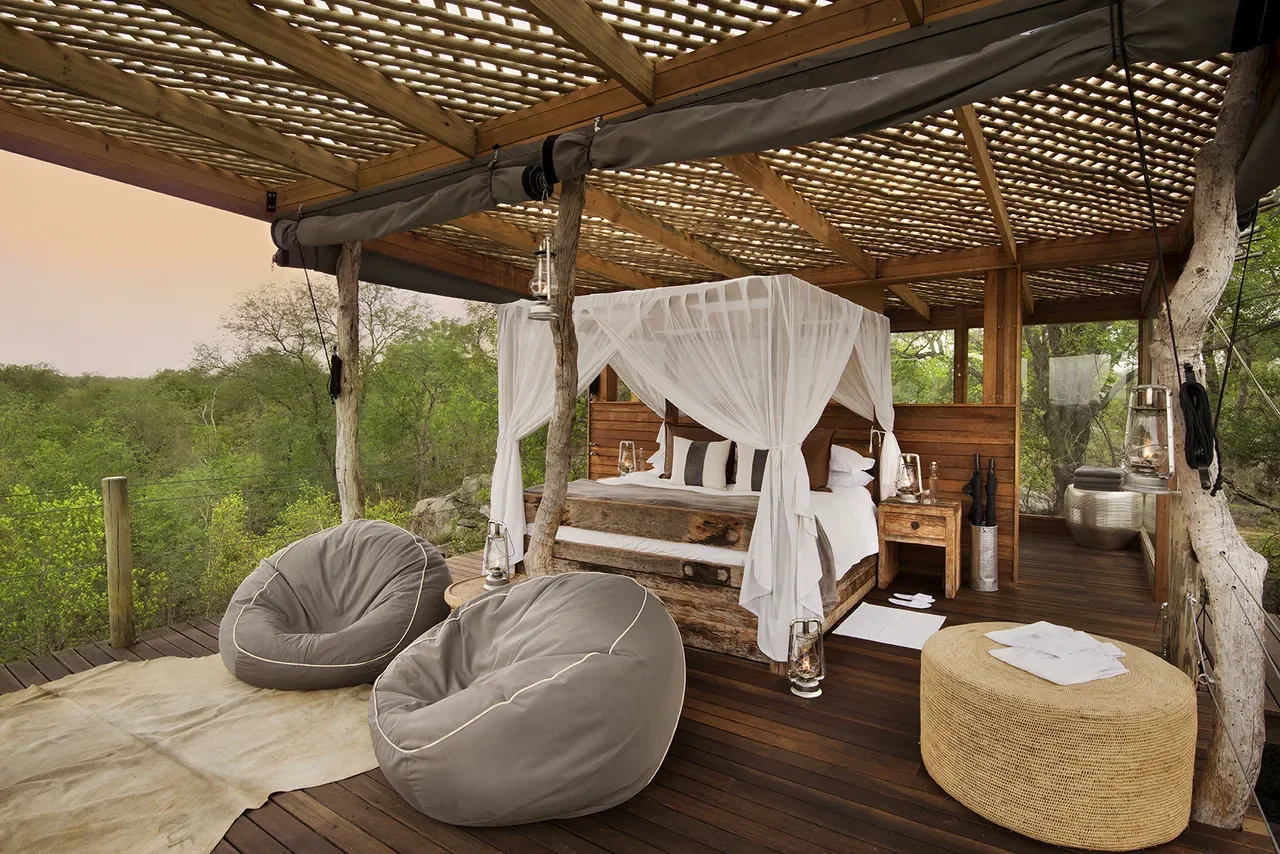What To Expect On Safari
Your Day, Your Pace, Your Africa
No two safaris feel the same. The same plain in two different months can behave like two different worlds. Grass length shifts, pans fill and empty, birds change their rhythm, predators adjust their patterns, and the light takes on a new tone. Countries add further personality. Namibia’s Kunene and Damaraland are studies in space and texture, where desert elephants move quietly along dry riverbeds and hills fall away into wide, stony plains.
Botswana brings a network of channels and islands in the Okavango, a water world that glows at sunrise and hums with dragonflies at noon. Zambia and Zimbabwe revolve around famous rivers, sandbanks, oxbows, and the slow theater of animals coming to drink. In Tanzania’s Serengeti you read the day across a broad horizon, and in Kenya you can cross from one mood to another in a single trip, from the open grasslands of the Mara to the wild folds of Laikipia. All of these places are safari, each one different, each one capable of giving you a moment you will carry home.
At NOMARA we build around that variety. Your dates and the way you like to spend time guide the plan. If you are a photographer, we look for places with hides, specialist vehicles, and long light. If you love to walk, we stretch your days on foot with guides who know the stories written in dust and dew. If you prefer to move by water, we time channels and river levels so boats and canoes are in the mix. If you want quiet and privacy, we choose smaller camps or private conservancies. The joy of safari is the way it adapts to you, and the way you change with it.
A typical day, and how it changes
Most people picture two game drives a day, one in the morning and one in the late afternoon, with a break in between. That pattern exists for a reason. Early mornings are cool and animated, with big cats moving before the heat and antelope shaking off sleep. Late afternoons cool again and slip into dusk, and the evening ends with a cold drink in a beautiful spot as the first stars appear. Drives usually last about three hours, sometimes longer depending on the action.
There is more. In many regions a full day out makes sense. On the Serengeti plains you might head out with breakfast and lunch packed, cross a wide distance, and sit quietly for an hour while a cheetah stalks, waits, and finally commits. With the right guide team at Ubuntu Migration Camp or Serian’s camps, you settle at a respectful distance and let the scene unfold. In northern Botswana a rising flood can make the land feel like an archipelago. From Vumbura Plains South you spend the morning on an island with lions hidden in palm thickets, then drift through lily channels in a mokoro, eye level with jacanas and frogs. In the Lower Zambezi, a stay at Toka Leya pairs river time and drives. One hour you watch elephants cross a channel, the next you follow a leopard through a winterthorn grove. When Kafue’s Busanga Plains open for the season, Busanga Bush Camp gives you long, golden mornings where red lechwe splash through mist and lions wait on termite mounds.
Walking adds a new dimension. It can be a gentle two-hour loop from Ngala Tented Camp in the Greater Kruger, or a morning tracking lesson in South Luangwa, where walking safaris were perfected and guides carry the story of the valley in their heads. In Mana Pools or open sections of the Zambezi floodplain, walking feels like a privilege, with big trees, wide views, and the reminder to notice wind direction and the language of birds. In Laikipia, camel-supported bush walks turn the landscape into a slow, thoughtful journey, with the day measured by conversation, coffee, and the soft thud of hoof on sand.
Night drives are available in many private concessions. When done well they reveal a different cast. Civets and genets flicker in the beam. Owls watch from branches. With luck you might follow lions on the move or African wild dogs returning to pups after a hunt. Great guiding balances the thrill of discovery with calm, animal-first etiquette.
Photography, hides, and the art of waiting
If photography is your focus, tell us early. Some places are designed for it. In private areas of Botswana and Zimbabwe, sunken hides sit at the edge of waterholes. From King’s Pool in Linyanti you can spend an hour eye to eye with elephants as they drink. Between drives, a hide near Ngala or in parts of the Delta offers close, quiet time that rewards patience. Specialist photographic vehicles with flexible seating and proper mounts are available in several Greater Kruger reserves and selected Delta concessions, and on certain rivers and channels there are low, stable boats built with photographers in mind.
The best images often come from staying put. When your guide reads a situation well, you settle at a distance and let the scene come to you. A lion pride on a cool morning. A fish eagle timing its strike. A bank where bee-eaters stitch color in the air. At a hide, practice following lilac-breasted rollers as they lift and return to a perch. On a full day in the Serengeti or the Mara, patience takes another shape. You might wait for a crossing, or watch a cheetah work for half a morning. Success is never guaranteed, which is exactly why the photograph matters when it finally arrives.
Beyond the vehicle
Safari is bigger than a seat in a game viewer. Small details add texture. In the Delta, a quiet hour in a mokoro lets you see the reed world at the scale of insects and waterbirds. On the Zambezi, a canoe drifts along channels you cannot reach by vehicle, with baboons barking on the bank and hippos holding their line in the current. In Kenya, some conservancies offer safe horseback riding that changes how wildlife reads you and gives you a thrilling, elevated view of the land. In Laikipia, camel walking safaris bring a rhythm that makes distance feel easy. In Phinda Private Game Reserve, and select Laikipia conservancies, guided mountain biking on set routes adds a different kind of game viewing that pairs well with a lazy afternoon swim.
Ballooning is pure magic when the wind cooperates. A dawn lift over the Mara or the Serengeti makes the land read like a map. Giraffes align like chess pieces, shadows stretch and shorten, and the burner’s warmth touches your cheeks as the basket rises again. After landing you sit down to a bush breakfast in the wild before heading back to camp, a small celebration of the morning you have just had.
Hides deserve a second mention because they fill the time between drives. Many are a short walk from camp, others are reached by vehicle during the siesta hours. The experience is close, quiet, and absorbing. You can wait for a sable bull to step out, or simply watch elephants test the water with their trunks. Guided properly, it feels both safe and deeply engaging.
Culture with care
Meeting people who call these places home can be a highlight, provided it is arranged with respect. In the Mara you can visit a Maasai community with a guide who knows the families and can explain how tourism supports local projects. In Samburu and Laikipia you learn how herders and wildlife share pasture and water, and how conservancies protect both livelihoods and habitats. In Namibia’s Kunene you meet community members linked to conservancy projects that support desert-adapted wildlife. The goal is not to tick a box. It is to listen, learn, and contribute to the work that lets communities thrive alongside the animals you came to see. In some Mara conservancies there are even guided trail runs with Maasai athletes for guests who like to start the day with movement and conversation.
Sleepouts and star beds
Few experiences match a night under the sky. Some camps offer raised platforms or treehouses where you spend an evening with a warm duvet and a radio to call the night guard if you need anything. In Kenya, Serian’s The Nest looks over a riverine setting and gives you the feeling of belonging to the night chorus rather than watching from a distance. In South Africa, select star-bed decks and sleepout platforms in private reserves let you drift off to jackals calling and wake to that deep pre-dawn blue. Elsewhere, fly camping is possible when the season and location are right. The routine is simple. Dinner by the fire, a warm drink, a netted bed, and constellations that seem close enough to touch.
Health, wellness, and the pleasure of doing very little
Game-rich mornings leave you pleasantly used up by lunchtime. The middle of the day is your own. Some camps have small spas for a back and shoulder massage, which pairs well with a nap and a slow swim. Others offer yoga on a deck above a river or on a sandy pan with horizon views. Simple stretching on your private veranda works just as well. If you like to run, we can arrange safe routes inside fenced areas or guided runs in suitable conservancies. If you prefer to read, the best seat in camp is often your own, facing open plains or a waterhole. The hours you spend there listening to go-away-birds, and in summer, woodland kingfishers, paging through a book and enjoying something cold, are as much safari as the most dramatic sighting. This is where background noise fades and the basics come back into focus.
Families can use the downtime for bushcraft with a guide. Kids love to learn how to make a toothbrush from a twig, how to read a track, and how to tell a hyena print from a leopard. Couples often use that time for a long conversation that the rest of the year never seems to allow. Friends travel well together on safari because the days create a rhythm. You share, you separate, you swap stories over dinner.
Food worth traveling for
Cooking on safari has moved forward while keeping its soul. Breakfast might be eggs on the fire with tomatoes and onions, coffee poured from a blackened pot, and warm muffins passed around while you watch the light change. On a full day out, lunch is a picnic of fresh salads, grilled meats or vegetable dishes, ripe fruit, and a sweet bite to carry you into the afternoon. Back in camp the tea table appears with cakes, tartlets, and the sort of biscuits you intend to take only one of. Sundowners are a small ceremony. Your guide finds a view, unpacks a simple bar, and the sky does the rest.
Dinner follows the mood of the place. Some nights are candlelit boma evenings with slow-cooked dishes from the coals and storytelling from your guides. Some nights are quiet tables on a deck where you hear frogs and talk softly. In parts of Kenya, shamba gardens supply greens and herbs that lift the plate. In the Delta and along the Zambezi, kitchens lean into seasonal produce and open-fire techniques. Where sustainable and permitted, line-caught fish may feature, but the focus is always on provenance, flavor, and generous hospitality. Many kitchens deliver cuisine that would be at home among top restaurants in major cities, made more memorable by the settings in which you eat. For families and couples, private setups are easy to arrange. A table under a fever tree. A lantern-lit corner on your veranda. A surprise bush breakfast with hot plates and a view of the hippo pool. Food becomes part of the memory because it is cooked by people who care and served in places you will not forget.
Guiding and hospitality
The best camps have a feeling that is hard to describe and easy to recognize. Someone remembers how you take your coffee. Your guide notices that you prefer to sit a little longer with a sighting rather than move on. The room attendant leaves a note about a small bird that nested near your deck. Guiding quality is the foundation. A great guide keeps you safe, makes you laugh, answers questions you did not know to ask, and steps back at the right moment so you can own the scene in front of you. Trackers in the Greater Kruger, river guides on the Zambezi, walking specialists in Luangwa, migration veterans in the Serengeti and Mara, and desert experts in Kunene all carry their landscapes inside them. Spending time with them becomes part of what you will remember.
Planning the rhythm that suits you
So what should you expect on safari, beyond animals and views. Expect early mornings that feel like a secret shared between you and the light. Expect long afternoons that close with a drink in your hand and a story in your head. Expect days that stretch and shrink depending on what you find. Expect a mix of drives, walks, water time, and quiet hours on your own veranda. Expect food that tastes better because you are hungry from being outside. Expect people who seem to enjoy your trip as much as you do. Most of all, expect the land to decide what happens next, which is why those moments feel like gifts.
Tell us when you want to travel and what draws you in. Big cats. African wild dogs. Birds. Walking. Water. Star beds. Culture. Photography. Family time. We will shape the right route and the right pace, and we will place you in camps and regions that match your style. Safari is not a checklist. It is a way of spending time. Done well, it becomes a habit you return to again and again, each journey different from the last and just as full of life.
Quick FAQs
-
Early morning drive, coffee stop in the bush, late breakfast back in camp, quiet midday with lunch, a second activity in the afternoon that runs into sunset, then dinner under the stars. Full day outings are common in wide landscapes like the Serengeti and the Mara.
-
Yes, when led by qualified guides and trackers. Briefings cover spacing, wind, and signals. Routes are chosen for visibility and conditions. You set the pace, your guide will match the walk to your comfort.
-
For peak months, plan 12 months ahead. Shoulder and green seasons offer more flexibility and excellent value with bookings anywhere from 3-6 months prior. Gorilla permits often need 6 to 12 months.
-
Not at all. Expect lush scenes, young animals, great birding, dramatic skies, and fewer vehicles. Some remote bush camps may pause, so we place you where conditions are best for your dates.
-
Yes. Vegetarian, vegan, gluten free, dairy free, halal, kosher by prior arrangement, and more. Tell us in advance so camp and lodge kitchens can plan properly.
-
Many camps have Wi-Fi in main areas. Remote locations can be slower or offline at times. Guides carry radios and satellite phones for operations and safety. Most guests enjoy the partial digital break.


